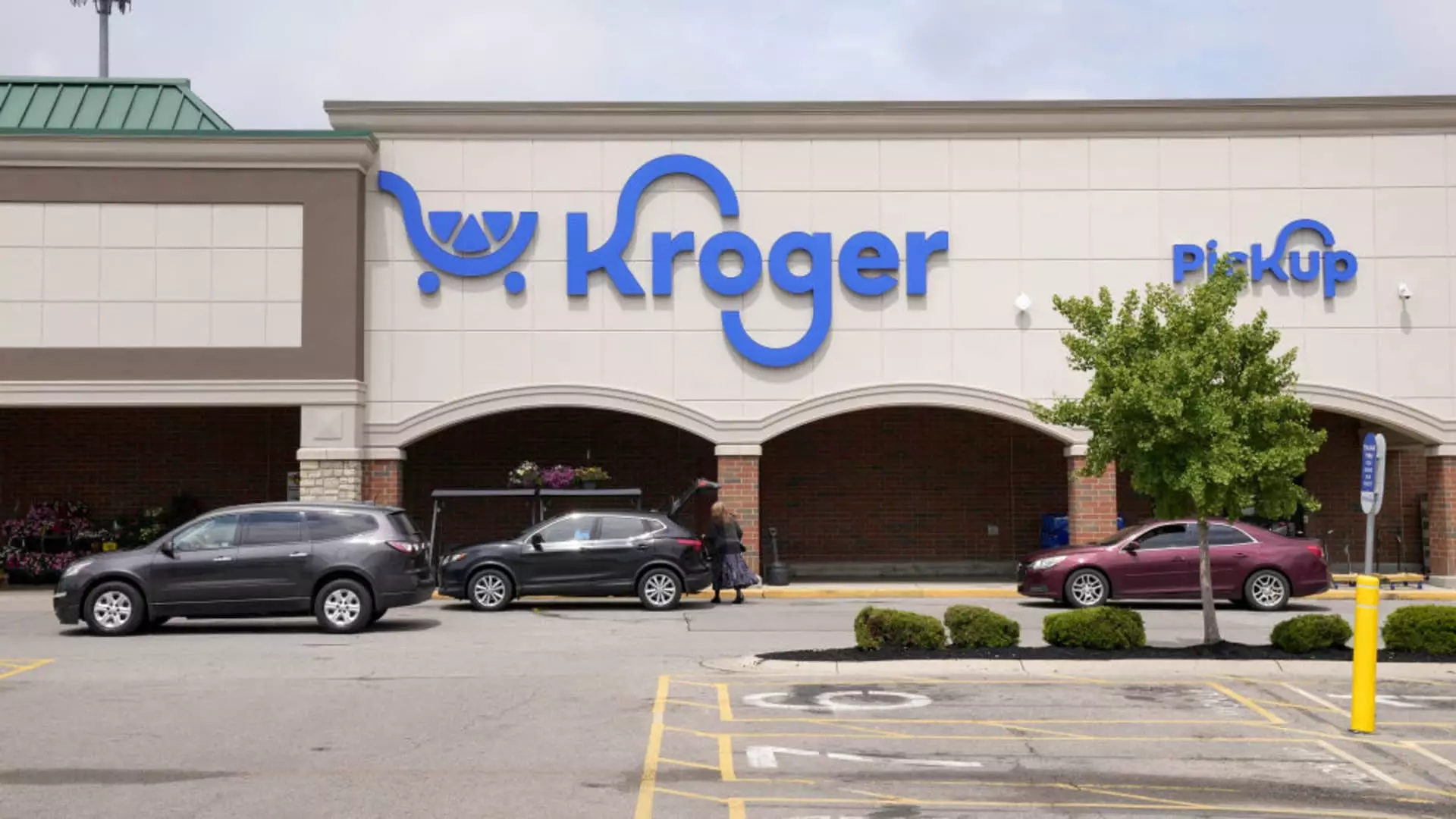Kroger, one of the nation’s leading supermarket chains, recently demonstrated surprising resilience as its stock jumped approximately 10 percent in one trading session. This spike was attributed to the company’s optimistic revision of its annual sales forecasts. However, beneath this surface-level triumph lies a more complex narrative, fraught with challenges and competing market dynamics that warrant a deeper examination.
Shifting Sales Narratives: A Temporary Fix or Sustainable Growth?
Kroger’s adjustment to its sales outlook suggests an acute awareness of the consumer landscape, which has been severely impacted by rising economic pressures and changing buyer behaviors. The retailer anticipates a 2.25% to 3.25% increase in identical sales—an industry-specific metric that denotes year-over-year growth while excluding anomalous factors. While these forecasts represent an uptick from earlier expectations, one must not overlook the broader implications of such optimism in a time of economic unpredictability.
The bump in sales can be attributed largely to a shift in consumer preferences toward lower-cost alternatives. As dining out becomes increasingly expensive, shoppers are flocking to Kroger for the allure of lower prices and affordable private labels. This change highlights the stark reality that many consumers are feeling the pinch and prioritizing price over brand loyalty. It raises a fundamental question: is this truly sustainable growth, or merely a reaction to the prevailing economic climate?
Kroger’s recent performance has outpaced the broader market, registering a nearly 16% increase in its shares this year against a modest gain of approximately 1% for the S&P 500. However, one must ponder whether these numbers are inflated due to transitory consumer trends, reflecting more a temporary spike than true potential longevity.
The High Stakes of Leadership Turbulence
Adding complexity to Kroger’s narrative is the company’s internal turmoil. The past year has been marked by significant leadership changes, which only deepen the uncertainties surrounding its future. The abrupt resignation of longtime CEO Rodney McMullen amid an investigation signifies a troubling chapter for the supermarket giant. New CFO, David Kennerley, hailing from the ranks of PepsiCo Europe, is tasked with steering a ship that has seen its fair share of storms.
When considering Kroger’s current circumstances, it becomes increasingly apparent that leadership and stability are paramount for long-term growth. While the company is working diligently to adapt, the need for a cohesive and resilient strategic direction is critical. Will the people managing the ship possess the right vision and fortitude to navigate the treacherous waters of modern retail?
Competitive Pressures Mounting: Walmart and Costco
Kroger’s battle isn’t just internal; outside pressures loom large as well. Competition with giants like Walmart and Costco is not just a routine hurdle; it’s the impetus for potential strategic shifts. As economic conditions dictate consumer habits, these rivals are not just vying for market share—they are redefining customer expectations around value and convenience.
Kroger’s effort to simplify promotions and enhance the appeal of its private-label brands is commendable, yet one must question whether this reactive strategy can keep pace with its formidable competitors in the long term. The demand for value-minded products has surged, but will this trend endure even after the economic pressures abate? It may be a game of whack-a-mole, where addressing one problem only highlights another.
Future Outlook: E-commerce and Store Closures
As part of its strategic pivot, Kroger has also made moves to shed approximately 60 stores over the coming year-and-a-half and subsequently reposition itself toward a digital-first future. While closing underperforming locations may seem like a logical step towards modernizing its operations, it poses inherent risks. The e-commerce sector, a lifeline for many traditional retailers, remains unprofitable for Kroger, stirring doubts about its viability moving forward.
In this context, the closures may offer short-term relief, but they also expose Kroger to the dangers of falling behind in an increasingly digital marketplace. While the decision to focus on higher-growth regions may yield positive results in 2026 and beyond, one wonders if Kroger can maintain both its broad appeal and profitability while simultaneously navigating strategic pivots.
The road ahead is fraught with uncertainty, and while Kroger’s stock prices may reflect a short-term resurgence, a more sober appraisal of its challenges reveals a complex portrait of both opportunity and peril. As the supermarket titan seeks its next CEO, the stakes could not be higher. Can it find leadership capable of crafting an innovative, resilient strategy that meets the evolving demands of consumers, or is it destined to become another cautionary tale in the annals of retail history? Only time will tell.

